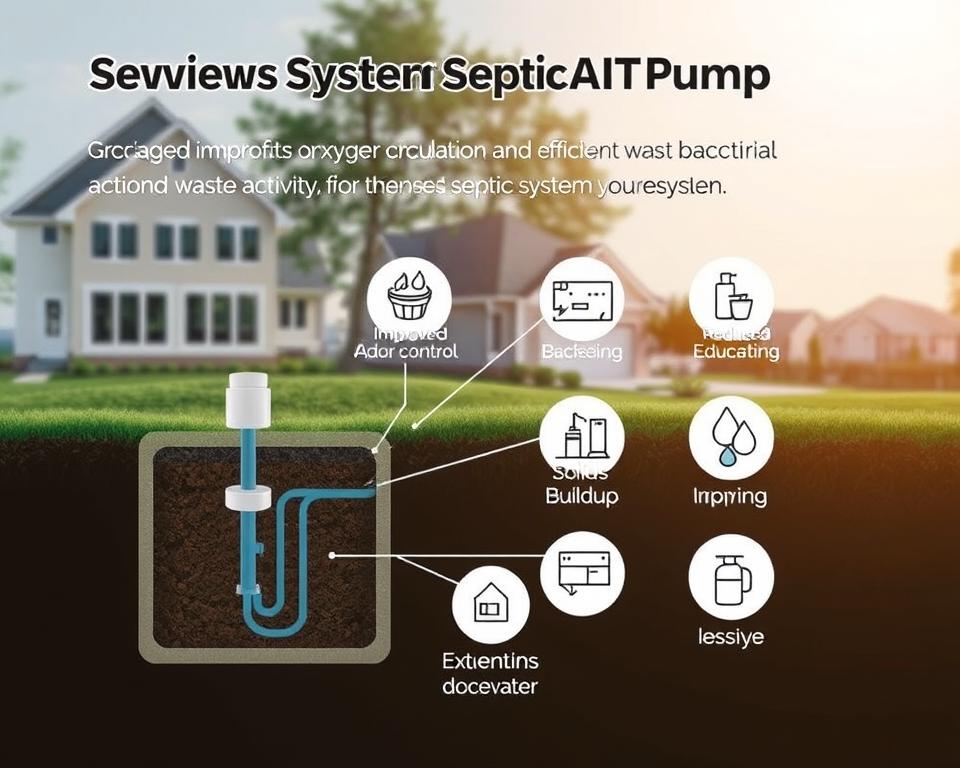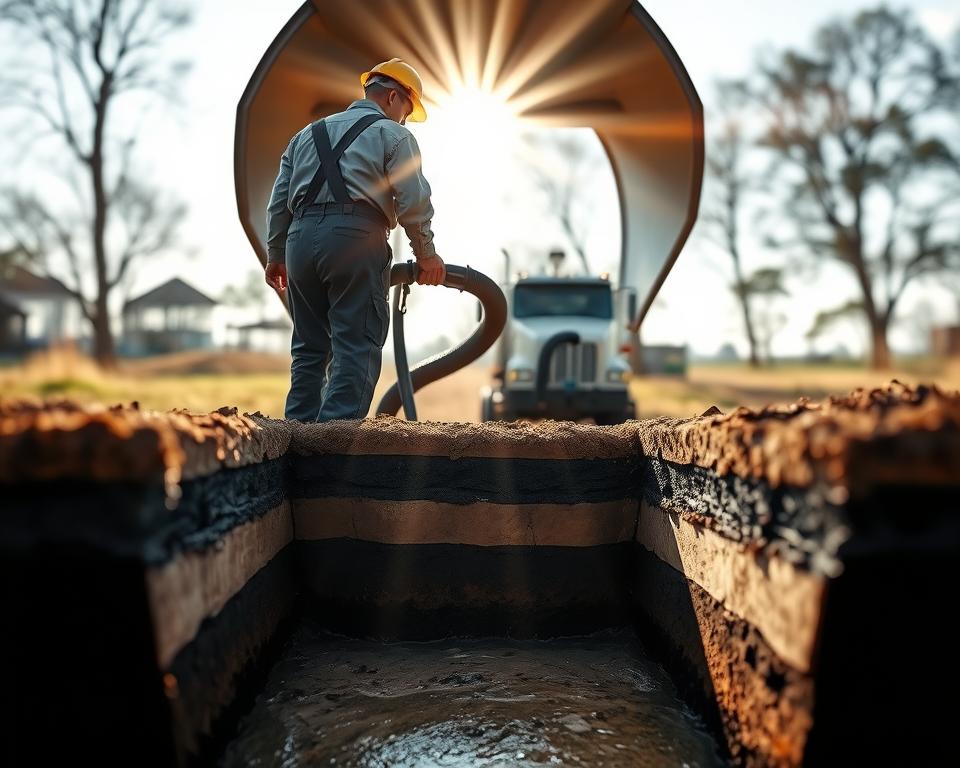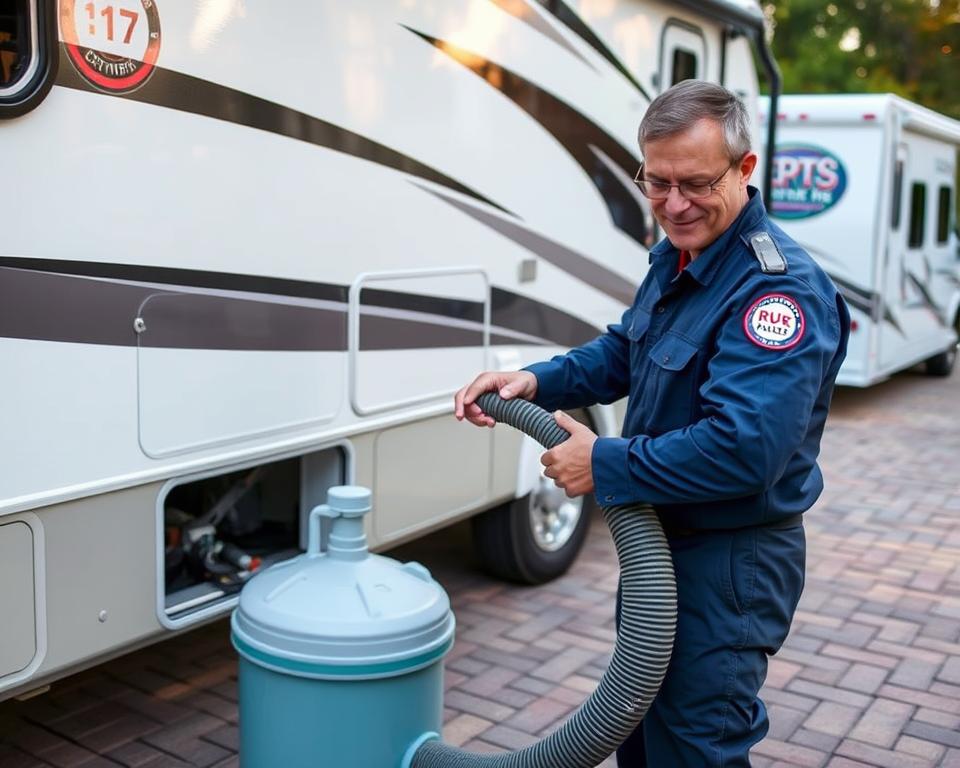Septic Aerator Pump: Must-Read Guide for Homeowners
Do you sometimes think about what powers your oxygen-based Septic system’s efficiency? The Septic air pump is the unrecognized key component integral for your system. Throughout this overview, readers will acquire valuable insight on the aerator’s function. It’s essential for a sound, well-run Septic tank.
Appreciating the importance of a Septic tank air Pump can improve your Septic system’s functionality using septic pumping. It also secures your real-estate worth and surrounding ecosystem. This guide will feature All in Sanitation, a well-regarded Septic industry leader. They’re eager to meet your Septic aerator Pump requests.
Key Takeaways
- The Septic air Pump is vital for air-driven Septic tanks.
- Maintaining your Septic system air Pump can improve overall system performance.
- Scheduled assessments extend the lifespan of your Septic tank air Pump.
- Choosing the right Septic aerator Pump is necessary for peak operation.
- All in Sanitation provides dedicated services for Septic air Pump solutions.
Understanding Aerobic Septic Units
Aerobic Septic systems offer a more effective waste treatment approach by supplying oxygen. This system relies on aerobic bacteria thriving in well-oxygenated environments. These bacteria are more efficient in processing organic matter. With the help of Septic aerator Pumps, these systems deliver a constant oxygen supply, accelerating the waste decomposition process.
These systems perform well in lowering sludge buildup, owing to the activity of aerobic bacteria. This cut in solid waste means fewer service calls and tank Pump-outs is needed. Additionally, they effectively manage wastewater, leading to barely any odor. This creates a healthier environment for homeowners and the community overall.
To guarantee these systems work properly, it’s essential to grasp the key Septic system components. These include the Septic tank, aeration chamber, and effluent Pump. Each section has a crucial role, especially the air Pump. It drives oxygen into the tank, crucial for the aerobic bacteria’s performance.
Importance of the Septic Air Pump
The Septic air Pump is key in the performance of aerobic Septic systems. It functions like the system’s “breathing mechanism,” pushing the vital oxygen mandatory. This oxygen enables aerobic bacteria to flourish and decompose waste quickly. If the Pump stops, the system’s performance decreases, leading to sludge accumulation and possible odors.
Such issues can disrupt Septic system operations and cause environmental hazards. By realizing how essential the Septic air Pump is, homeowners can respond ahead of time. They can secure its optimal function through regular maintenance. This wards off failures, avoids costly repairs, and protects the aerobic system’s health.
Key Benefits of Using a Septic Air Pump
Utilizing a Septic air Pump markedly increases the performance of Septic systems. Septic air Pumps are crucial as they fast-track the breakdown of waste. This is achieved by oxygenating the treatment process, stimulating aerobic bacteria growth. These bacteria are essential for efficient waste treatment.
They’re also helpful in reducing foul smells. Due to more active aerobic processes, waste breaks down faster, thus lessening odors. This provides a fresher environment for homeowners.
Another significant benefit is the cut in sludge accumulation. Consequently, tanks require less frequent Pumping, cutting both money and time. Better processing not only cuts expenses but also extends the lifespan of the drain field.
Looking after these Pumps diligently means minimal repair costs and adhering to regulatory standards. Thus, the upsides of Septic air Pumps go beyond being for homeowners. They also enhance environmental health by raising waste management practices.
| Benefit | Description |
|---|---|
| Fast Waste Breakdown | Enhanced aerobic activity quickens the decomposition process. |
| Minimized Odor Emissions | Superior treatment efficacy produces fewer odors. |
| Reduced Sludge Buildup | Fewer Pumping and maintenance are needed. |
| Extended Drain Field Life | Better treatment equals a healthier drain field. |
| Cost Savings | Lower chance of repairs and regulatory compliance cost. |

Finding a Suitable Septic Air Pump
Selecting the best Septic air Pump is essential for an optimized aerobic system. Homeowners need to evaluate various factors for the ideal match. The volume of the tank and the airflow needs play a crucial role the Pump’s efficiency.
To choose intelligently, it’s helpful to know the air Pumps available. There are mainly two types: diaphragm Pumps and rotary vane Pumps. Each delivers distinct advantages, which should be suited with your home’s specific needs and how it operates.
Power consumption also matters. Picking a Pump that cuts energy use while supplying the needed airflow can offer lower utility bills. Guidance from All in Sanitation professionals can be priceless. They verify the Pump you choose suits your system’s requirements perfectly.
Common Types of Septic Air Pumps
Homeowners can choose intelligently by recognizing the different Septic air Pumps available. There are mainly two types: diaphragm Pumps and rotary vane Pumps. Each has its particular functions and benefits.
Diaphragm Pumps, known for their low-noise operation, are preferred for residential Septic systems. They maintain energy efficiency while providing steady air flow. Their constant performance matches smaller systems, meeting the needs of many homeowners.
Rotary vane Pumps, however, are ideal for larger or commercial systems. These Pumps provide higher capacity, needed for handling bigger loads. Their robust build allows efficient operation in broad Septic systems.
| Type of Pump | Best Use | Advantages |
|---|---|---|
| Diaphragm Pumps | Residential Systems | Quiet operation, energy-efficient, reliable air flow |
| Rotary Vane Pumps | Larger or Commercial Systems | Powerful performance, high capacity, durable construction |
Appreciating the variations in Septic air Pumps is important for upgrades or replacements. Each Pump type provides specific features to address various needs. This provides top performance for any system.
Indicators You Require a Septic Air Pump Replacement
Homeowners must watch for Pump failure signs in their Septic systems. Some signals point towards the need for a Septic air Pump replacement. These support reliable function. Noticing these promptly avoids serious issues.
Signs of potential problems include:
- Unusual noises from the Pump, like rattling or buzzing, might suggest internal damage.
- A clear lack of air output reveals the Pump isn’t performing as intended, impacting efficiency.
- Regular electrical problems, such as tripped breakers or power dips, could point to overloading.
- Visible damage on the Pump unit, with splits or leaks, requires quick action.
- Foul odors in the yard often suggest a compromised Pump, showing ineffective effluent aeration.
Spotting these signs early stops high repair bills or total system failure. Scheduling consistent assessments helps identify these issues. It also shows if you need a new Septic air Pump.
Upkeep Advice for Your Septic Air Pump
For an optimal Septic air Pump, periodic care is crucial. This makes sure that your system works smoothly. Homeowners can employ several practical care strategies for maximum results.
Half-yearly, conduct a thorough inspection for wear or damage. It is also important to replace the filters as indicated. This reduces clogs that could hurt efficiency.
The Pump should sit on a firm base to cut vibrations, which could affect it over time. A protective cover is important too. It protects against debris and water, preserving the Pump’s functionality.
Regular servicing can significantly lengthen the life of your Pump. In turn, this supports the Septic system’s performance overall.
| Maintenance Task | Frequency | Benefits |
|---|---|---|
| Inspect Pump for damage | Every 6 months | Identifies issues early |
| Replace filters | As needed | Keeps performance up |
| Check surface stability | Annually | Protects components |
| Clear debris around Pump | Monthly | Avoids obstruction |
Setting Up Your Septic Air Pump
Effective installation of your Septic air Pump is key for its smooth operation. At the outset, select a safe, moisture-free area for placement. The chosen spot should safely bear the Pump’s weight without strain.
To reliably set up your Pump on your own, use the following guidelines:
- Prepare all necessary items, including the Pump, a power source, and hose fittings.
- Carefully read the manufacturer’s guidelines before beginning your installation.
- Verify every connection is secure to avoid air leaks that compromise performance.
- After assembly, conduct a test to check the system works as intended.
If the installation process appears difficult, get in touch with All in Sanitation. Their professionals can sidestep common errors, making sure your setup adheres to necessary safety requirements.
Benefits of Choosing All in Sanitation for Your Septic Air Pump Needs
When selecting a Septic service provider, the choice is important. All in Sanitation sets itself by offering dependable Septic air Pumps. They satisfy varied homeowner requirements with a comprehensive selection of quality products. This ensures customers get an ideal match for their Septic systems.
What truly separates All in Sanitation is not solely their large product lineup. Their focus to superior customer service is also noteworthy. Homeowners enjoy knowledgeable support, steering them toward trusted Septic solutions. This joint effort is crucial to adapt each solution to fulfil specific needs.
All in Sanitation also prioritizes aftercare to deliver lasting satisfaction. Their dedication goes beyond the initial sale. They offer ongoing support to keep Septic systems operating efficiently for the foreseeable future.
Cost Considerations for Septic Air Pumps
Grasping the price factors connected with Septic air Pumps is important for homeowners with aerobic Septic systems. To start, one faces the buy-in cost, which includes the Pump and associated accessories. Installation expenses differ, in line with the system’s complexity and any modifications required.
Ongoing upkeep forms an additional cost layer. Periodic reviews can ward off bigger issues, ultimately leading to savings. Homeowners should set aside funds for Septic maintenance to retain the Pump’s effectiveness and longevity. Such planning helps dodge expensive repairs later on, highlighting the benefit of proactive maintenance.
| Cost Component | Average Cost Range |
|---|---|
| Septic Air Pump | $500 – $1,200 |
| Installation | $300 – $800 |
| Annual Maintenance | $150 – $400 |
| Potential Repair Costs | $1,000 – $5,000 |
Dividing Septic air Pump expenses into separate parts helps homeowners in budgeting. This comprehensive approach provides the system’s consistent operation and their peace of mind.
Conclusion
For homeowners with aerobic Septic systems, caring for Septic systems is essential. The suitable Septic air Pump optimizes waste processing and prolongs your system’s life. Sticking with consistent service and promptly addressing issues stops large repair bills and disruptions.
Selecting a Septic air Pump requires careful thought. This guide outlined how to choose wisely about installation and replacement. With All in Sanitation’s expertise, you can manage your Septic systems’ complexities assuredly.
Taking care of your Septic air Pump promotes your system’s operation and longevity. It ensures a smooth and effective operation over time. Keep in mind, your home’s wastewater management relies heavily on regular attention.


